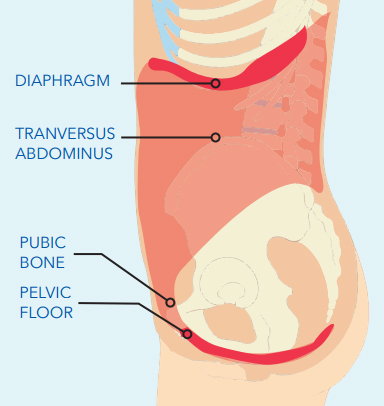Pelvic Floor Physical Therapy
Pelvic floor physical therapy can provide conservative management for a variety of pelvic health diagnoses and pelvic floor muscle dysfunctions. Pelvic floor dysfunctions can result from imbalanced musculature; muscles that are stressed, weakened or tightened can lead to pain, incontinence or functional impairments. Physical therapy can help restore balance within the pelvis and surrounding structures, resulting in improved quality of life.
We treat patients with:
- Pregnancy-related pain, including low back pain, pelvic pain, sacroiliac joint pain and hip pain.
- Post-partum dysfunction, including pelvic organ prolapse, perineal tears and scars, low back pain, pelvic pain, painful intercourse, and diastasis recti (also known as abdominal separation).
- Urinary incontinence affecting both men and women. Diagnoses we treat can include stress urinary incontinence (SUI), urge incontinence, mixed incontinence, incontinence status post -prostatectomy (incontinence following a prostatectomy, which is the partial or complete surgical removal of the prostate), and post-surgical incontinence.
- Pelvic pain, including pelvic floor dysfunctions, interstitial cystitis (also known as painful bladder syndrome), endometriosis (when tissue that normally grows inside the uterus grows outside of it), post-surgical pain, painful intercourse, pelvic injuries and pelvic floor muscle spasms.
- Bowel dysfunction, including fecal incontinence, constipation and dyssynergic defecation (a condition that causes muscles and nerves in the pelvic floor to not function properly).
Anatomy and physiology
The pelvic floor muscles travel from the front to the back of the pelvis, forming a “braided hammock” that provides support to the pelvic organs. Outlets of the bladder, rectum and vagina travel through the pelvic floor muscles. In order for the pelvic organs to function properly, adequate strength and coordination of the pelvic floor muscles is needed.

What to expect
Your first visit will last about an hour. The physical therapist will evaluate your pelvic floor. Your evaluation may include a pelvic exam, palpation of pelvic structures, range of motion, postural assessment, pain and overall function. You can dress in comfortable clothing. We have gowns and sheets provided for your comfort and privacy.
Treatment options
Your treatment plan will be designed specifically for your needs and condition. You may receive manual therapy, exercise, education, postural correction, biofeedback, pelvic floor muscle training or electrical stimulation to treat pelvic floor dysfunction. You should expect to learn activities and exercises to do at home.

